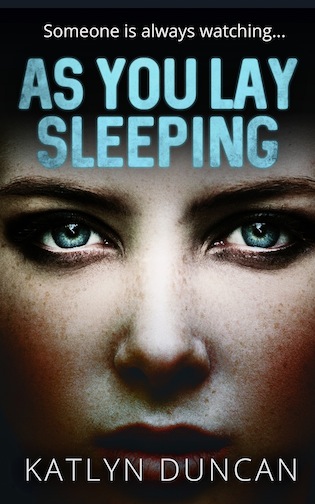In February, join the conversation as Mary Waibel, Kai Strand, and Katie L. Carroll talk genres for this month’s #InkRipples posts.

There are lots of ways to define genre in literature (see the dictionary definition of “genre” or the Wikipedia entry on “literary genre”). For our intents and purposes of today’s discussion, let me specify by saying that when I’m talking about genre, I mean as they are defined in modern publishing, not necessarily limited to genre fiction (which contains certain popular genres) but sticking to fiction.
Specifically, I want to address common misconceptions about genre. If you’ve ever done any research on genre yourself, you’ll see it can be quite contentious, so I don’t expect everyone to agree with me here. Let’s dig right in…
 Misconception 1 – Age Categories Are Genres
Misconception 1 – Age Categories Are Genres
One key to understanding genre is to know what it’s not. I often see people refer to YA (young adult) as a genre. It’s not, no more than adult fiction is a genre. YA is a category that designates a target age range for its readers and will center around characters of that age group. That’s not to say that readers out of the target age range won’t enjoy those books (you all know I mostly read YA, and I’m in my 30s). The same goes for middle grade–it’s not a genre but an age category.
Misconception 2 – Genre Is Easy To Define
So what is a genre? So-called “popular genres” or “genre fiction” include fantasy, science fiction, horror, mystery, romance, and thriller, among others. A story in one of these genres will follow the conventions of its genre and comes with certain expectations from readers. For example, you can expect a fantasy story to include fantastical elements that don’t exist in our world. Each popular genre has its own conventions, though there certainly can be overlap.
What about literary fiction? Is that a genre in and of itself? You certainly wouldn’t call literary fiction a popular genre as it cannot be defined by the genre conventions of those popular genres. Literary fiction tends to focus on the human condition and themes rather than plot. It’s more an absence of popular genre, but in publishing, I would say it’s considered its own genre. There are still expectations from a reader about what they will get with literary fiction, and you’ll find it as a category in book stores.
Are contemporary and historical genres? There’s some debate here. They denote whether a story takes place in a historical time period or in contemporary times, but you also have to take into consideration when the book was written. A story written in the 1980s about stuff that happened in the 1980s was contemporary then, but a YA story written today about stuff that happened in the 1980s is historical. You can have a contemporary romance or a historical one, but there’s also just historical fiction that deals with a historical time period or event but with fictional elements. Historical doesn’t necessarily have elements of mystery or romance or thriller, but a reader would have certain expectations from an historical novel. Contemporary is tricky because it usually fits into one of the popular genres, and if it doesn’t, it’s probably considered literary fiction.
Complicating the issue of genres even more is sub-genres and novels that can fit into more than one genre. Paranormal is a sub-genre of fantasy that specifically includes a heavy focus on paranormal elements, often in the form of mythical or magical creatures (i.e. TWILIGHT). A fantasy story can have paranormal elements but can also be categorized as fantasy and not necessarily paranormal. What about a story set in a futuristic world with science-fiction elements that also has heavy romance elements? Is it science fiction or romance? It may be categorized as both (a science-fiction romance) or may be categorized with the more dominant one, and people may not agree on which one is more prevalent.
Misconception 3 – Literary Fiction Is More Serious Than Genre Fiction
It’s been said that literary fiction is about confronting reality while genre fiction is about escaping reality. Literary fiction is often said to deal deeper with character and uses plot as a secondary device, but I’ve read plenty of genre fiction that gets deep into character while also having a riveting plot. Writing quality of literary fiction is also often lauded as superior to genre fiction, but I think the quality of writing largely depends on who’s doing the writing and not so much on genre (read Laini Taylor’s DAUGHTER OF SMOKE AND BONE for a lyrical and beautifully written fantasy story). So while it might be true that you’re more likely to study literary fiction in school and read genre fiction on your own time (though school’s are delving into popular fiction more than ever), that doesn’t necessarily make literary fiction more serious.
In fact, as a writer of fantasy, mystery, and thrillers, I would fight you to the death (strictly in a fantastical world, of course!) to argue that genre fiction can be, and often is, as serious as literary fiction. In fact, I think genre fiction can be very effective at commenting on reality and providing a deeper understanding of our own world, but it also gives that reality a more palatable context by using the conventions of genre fiction. The lens of genre fiction can almost make it easier to comment on and gain perspective of current issues of our world.

This discussion of genre has gotten longer than I intended, so I’m going to stop with these three misconceptions. Do you think I totally missed the mark on genre? Or maybe I missed something big that you’d like to see discussed in a future post. I’d love to hear your thoughts on literary genres.
# InkRipples is a monthly meme created by Katie L. Carroll, Mary Waibel, and Kai Strand. We pick a topic (February is all about genres), drop a ripple in the inkwell (i.e. write about it on our blogs), and see where the conversation goes. We’d love to have you join in the conversation on your own blogs or on your social media page. Full details and each month’s topic can be found on my #InkRipples page.
InkRipples is a monthly meme created by Katie L. Carroll, Mary Waibel, and Kai Strand. We pick a topic (February is all about genres), drop a ripple in the inkwell (i.e. write about it on our blogs), and see where the conversation goes. We’d love to have you join in the conversation on your own blogs or on your social media page. Full details and each month’s topic can be found on my #InkRipples page.
 Not all writers feel this way. I’ve known some who go as far as to say they love revising! Sadly that is just not the case for me. Revision often feels overwhelming to the point that I am inclined to avoid it. Of course I want my work to be the best it can be, but I find it’s hard to know how to specifically make it better and to be objective about my work (one day I can love what I’ve written, and the next hate that very same piece of writing). I actually think I’m much better at having insights into other people’s work and helping them on a path to revision.
Not all writers feel this way. I’ve known some who go as far as to say they love revising! Sadly that is just not the case for me. Revision often feels overwhelming to the point that I am inclined to avoid it. Of course I want my work to be the best it can be, but I find it’s hard to know how to specifically make it better and to be objective about my work (one day I can love what I’ve written, and the next hate that very same piece of writing). I actually think I’m much better at having insights into other people’s work and helping them on a path to revision. #InkRipples is a monthly meme created by Katie L. Carroll, Mary Waibel, and Kai Strand. We pick a topic (April is about revision), drop a ripple in the inkwell (i.e. write about it on our blogs), and see where the conversation goes. We’d love to have you join in the conversation on your own blogs or on your social media page. Full details and each month’s topic can be found on my #InkRipples page.
#InkRipples is a monthly meme created by Katie L. Carroll, Mary Waibel, and Kai Strand. We pick a topic (April is about revision), drop a ripple in the inkwell (i.e. write about it on our blogs), and see where the conversation goes. We’d love to have you join in the conversation on your own blogs or on your social media page. Full details and each month’s topic can be found on my #InkRipples page.





























